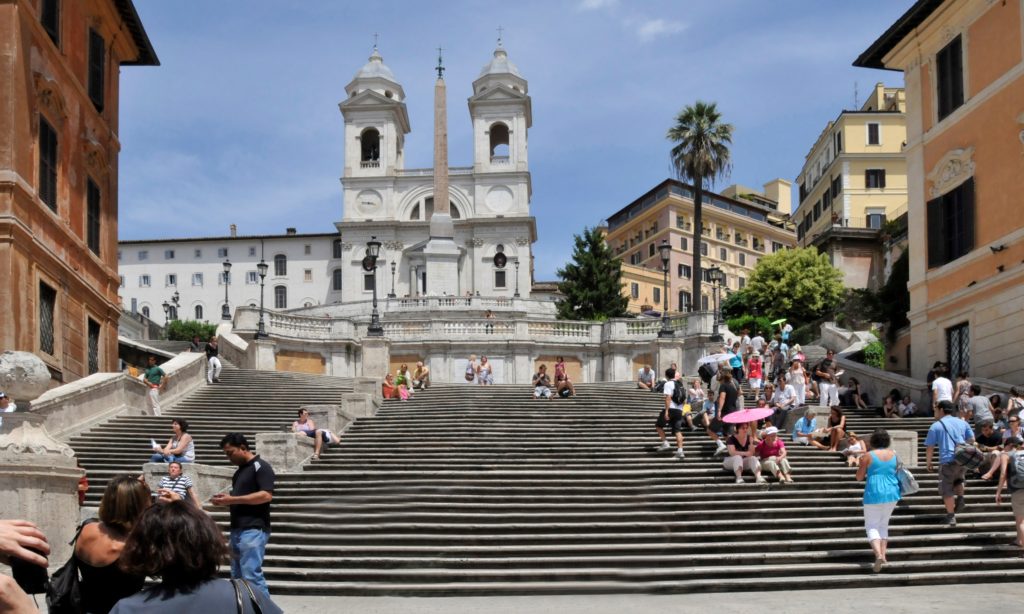
The Spanish Steps constitute the widest stairway in Europe. To find them, you go to Rome and look for a French church.
In 1494, Francis of Paola, a Christian hermit, established the monastic Order of Minims and built a monastery atop Pincian Hill in what was then the northeastern corner of Rome. In 1502, King Louis XII of France began building a church next to the monastery that became known as Trinità dei Monti (Trinity of the Hill). In 1647, the Spanish government moved its embassy to the Holy See, considered the oldest embassy in the world, to the base of Pincian Hill. The embassy became known as the Palazzo di Spagna (the Palace of Spain) and the nearby public square became known as Piazza di Spagna (Spanish Square). The square became popular, attracting people from throughout Rome to elaborate events held by the embassy.
In 1659, France and Spain signed a treaty ending the Franco-Spanish War. A year later, Stefano Gueffier, a French diplomat, bequeathed 20,000 scudi to connect the Spanish Square with the French church. Beginning in 1723, Gueffier’s funds were used to construct a stairway from Piazza di Spagna to the top of Pincian Hill. The original idea of a statue of French King Louis XIV was rejected by the Pope. The picturesque Spanish Steps (officially Scalinata di Trinità dei Monti), including between 135 and 138 steps depending on what is counted, attracted artists, who in turn attracted young women seeking to become models. As a result, the Spanish Steps became a popular place for people from throughout Rome to meet and linger. In 1995, after a major restoration, an ordinance prohibited eating on the Spanish Steps. In 2019, an ordinance made sitting on the steps subject to a $450 fine. Like other Italian laws, these ordinances are not religiously obeyed.